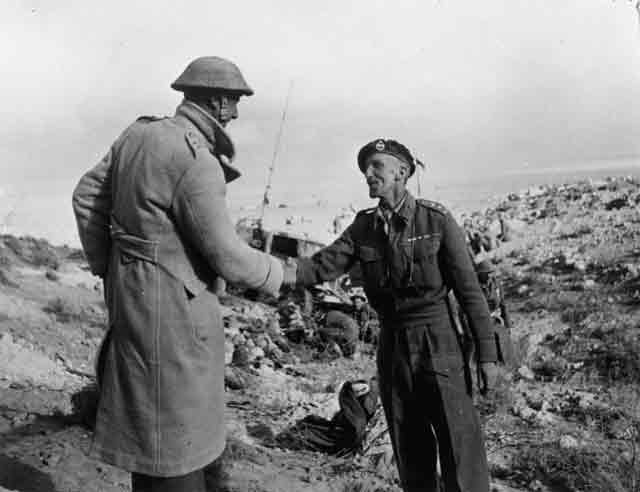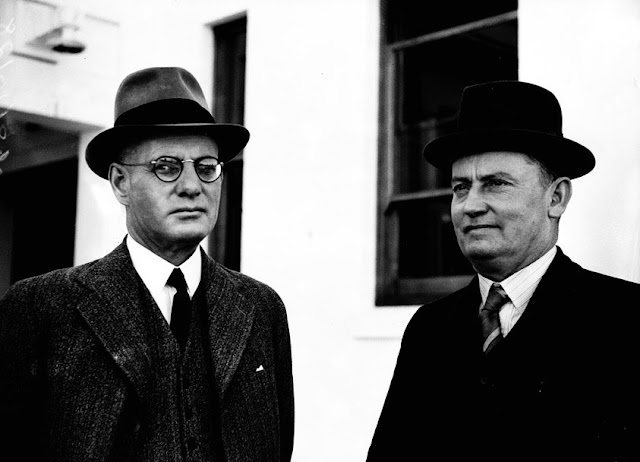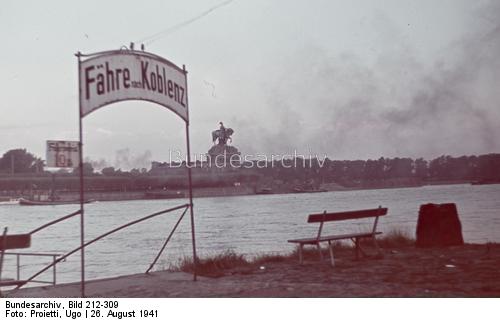Saturday 29 November 1941
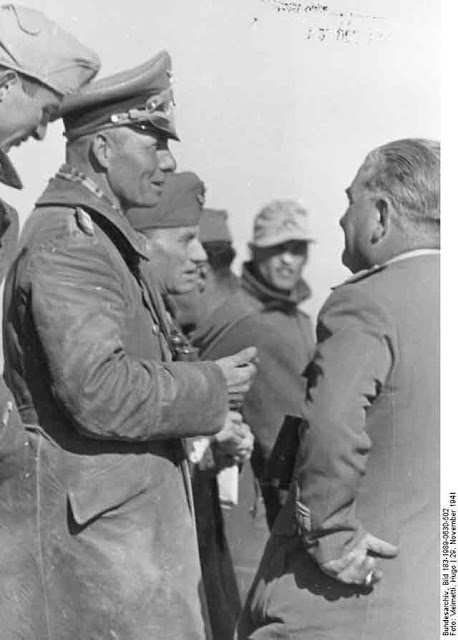 |
| General Erwin Rommel with officers at the front in North Africa south of Tobruk, 29 November 1941 (Vielmetti, Hugo, Federal Archive Picture 183-1989-0630-502). |
Eastern Front: After a week in Berlin to attend to diplomatic affairs and high-profile funerals, Adolf Hitler steps off his command train "Amerika" at Rastenburg in East Prussia early on 29 November 1941 and soon learns very unpleasant news. For the first time in the war, the Wehrmacht is retreating from a major objective. The commander of Army Group South, Field Marshal Gerd von Rundstedt, has authorized General Ewald von Kleist to order a planned withdrawal from Rostov-on-Don. General Franz Halder, chief of operations at OKH, has to lamely admit in his war diary:
While Goebbels maintains an air of nonchalance, Hitler at the gloomy Wolfsschanze is furious about the retreat from Rostov and orders it to stop. However, Army Group South commander Field Marshal Gerd von Rundstedt knows a trap when he sees one and refuses to countermand his orders to Kleist. SS General Sepp Dietrich, in command of the 1st SS Panzer Division Leibstandarte SS Adolf Hitler (LSSAH) holding Rostov, is an old friend of "Adi" (as he always calls Hitler) and eventually calms Hitler down by explaining that the retreat was necessary. In fact, the retreat from Rostov is necessary under the circumstances, as the German advance to it has become an indefensible projection into Soviet territory that could be easily encircled. Kleist's and Rundstedt's decision to retreat ultimately preserve the Wehrmacht's position in southern Russia better than anywhere else on the front. This retreat from Rostov is the main reason that Rundstedt later is relieved of his command, but Hitler eventually realizes the wisdom of the move. He will re-employ von Rundstedt and, later, promote von Kleist to Field Marshal. Hitler often shows respect toward generals who stand up to him for the right reasons, though they may suffer in the short run. This ultimately becomes one of those instances.
To the northwest of Moscow, things are a bit brighter for the Germans, but only a little bit. Seventh Panzer Division has held a small bridgehead across the Moscow-Volga canal at Yakhroma. However, the combat is so fierce that panzers cannot survive in the bridgehead, so the Germans abandon it and redirect their effort west to Krasnaya Polyana. German Third Panzer Army and Fourth Army make small gains, but a breakthrough eludes them. On the Soviet side, General Zhukov reassures Stalin that the German offensive has stalled in this area. Stalin then turns over First Shock, Twentieth, and Tenth Armies to Zhukov for a counterattack.
While the Germans continue grinding away, it is obvious to them as well that the attack on Moscow has stalled for the time being. Army Group Center commander Field Marshal Feder von Bock telephones Halder and unloads his deepening doubts about the situation. As Halder records in his diary:
Battle of the Mediterranean: The British Eighth Army and German Afrika Korps have been locked in a death grip south of Tobruk. The main objective of the British Operation Crusader, the relief of Tobruk, has been achieved. However, the corridor to the port is narrow and the Germans remain determined to cut it. In the morning, the German 15th Panzer Division moves forward to attack the corridor. Italian units also move forward during the day, and during the afternoon, the Ariete Division defeats the 21st Battalion of New Zealanders at a key height, Point 175. As one of the New Zealand unit's officers, Lieutenant-Colonel Howard Kippenberger, later notes:
November 1941
November 1, 1941: Finns Attack Toward Murmansk Railway
November 2, 1941: Manstein Isolates Sevastopol
November 3, 1941: Japan Prepares to Attack
November 4, 1941: German Advances in the South
November 5, 1941: Last Peace Effort By Japan
November 6, 1941: Stalin Casts Blame in an Unexpected Direction
November 7, 1941: Stalin's Big Parade
November 8, 1941: Germans Take Tikhvin
November 9, 1941: Duisburg Convoy Destruction
November 10, 1941: Manstein Attacks Sevastopol
November 11, 1941: Finland's Double Game Erupts
November 12, 1941: T-34 Tanks Take Charge
November 13, 1941: German Orsha Conference
November 14, 1941: German Supply Network Breaking Down
November 15, 1941: Operation Typhoon Resumes
November 16, 1941: Manstein Captures Kerch
November 17, 1941: Finland Halts Operations
November 18, 1941: British Operation Crusader
November 19, 1941: Sydney vs. Kormoran Duel
November 20, 1941: The US Rejects Final Japanese Demand
November 21, 1941: Germans Take Rostov
November 22, 1941: Kleist in Trouble at Rostov
November 23, 1941: Germans Take Klin, Huge Battle in North Africa
November 24, 1941: Rommel Counterattacks
November 25, 1941: HMS Barham Sunk
November 26, 1941: Japanese Fleet Sails
November 27, 1941: British Relieve Tobruk
November 28, 1941: Rostov Evacuated, German Closest Approach to Moscow
November 29, 1941: Hitler Furious About Retreat
November 30, 1941: Japan Sets the Date for its Attack
2020
The reports on Rostov confirm the picture obtained yesterday. The numerically weak forces of First Panzer Army had to give way before the concentric attack launched in very great strength from the south (here apparently main effort), west, and north. On the morning of 29 Nov., SS Adolf Hitler was taken back into the new defense position west of Rostov, the withdrawal of Sixteenth Motorized Division is still in progress.In his evening update, Halder notes the "violence with which the enemy pressed on behind our forces" and concedes that "one wonders whether we might not have to withdraw further still." In Berlin, Propaganda Minister Joseph Goebbels is forced to announce for the first time that the Germans are retreating in Russia. However, Goebbels reassures the press of the Reich's allies that it is only a "temporary pause" in operations - which does not appear to be the case.
 |
| "Royal Tank Regiment officers and men being briefed on proposed operations in Tobruk, 29 November 1941." © IWM (E 6852). |
 |
| "Western Desert, North Africa. 29 November 1941. Informal group portrait of airmen of an Army co-operation squadron receiving a brief lecture while digesting their midday meal. They are told the position on the battlefront of the second British Libyan offensive - Operation Crusader, so they know what is happening and what to do." Australian War Memorial MED0145. |
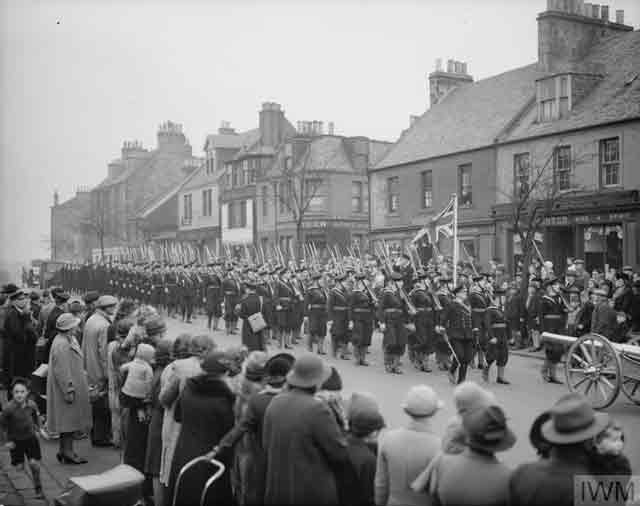 |
| "Inverkeithing, North Queensbury, and Hillend Warship Week. 29 November 1941, Inverkeithing and Rosyth." © IWM (A 6417). |
Concerning the allegation that the Army Group lacks definite objectives (Goering's unconsidered opinion), the Army Group knows exactly what it is after. However, if the current attack on Moscow from the north is unsuccessful, he fears the operation will become another Verdun, i.e., a brutish, chest-to-chest battle of attrition (soulless frontal confrontation).The situation around Moscow, Halder concludes, does not permit the capture of the Soviet capital at this time:
In any event, it can be stated even now that at most Army Group Center will be able to push the northern wing to the Moscow line, while Guderian may clear the enemy out of the Oka salient northwest of Tula, to gain the area for winter quarters.So, from this point forward, the best that can be achieved is a slightly better positioning in order to wait for spring in order to resume the offensive.
 |
| "Western Desert, North Africa. 29 November 1941. One of the American Boeing Flying Fortress bomber aircraft, code no. WP, serial no. AN532, operating in the Middle East campaign on the ground. These giant Boeing four-engined bombers carry a bomb load of 8,000 lbs over 2,000 miles and are capable of climbing to 41,000 feet. The comment of an RAF pilot flying a Fortress was 'she had no vices'." Australian War Memorial MED0141. |
About 5:30 p.m. damned Italian Motorized Division (Ariete) turned up. They passed with five tanks leading, twenty following, and a huge column of transport and guns, and rolled straight over our infantry on Pt. 175.The German attack is hampered by trouble at the 21st Panzer Division, which was supposed to participate in the attack. However, the British capture General Johann von Ravenstein, their commander who is leading from the field while on a reconnaissance. He becomes the first German general captured by the Allied forces during World War II. However, otherwise, things are looking up for the Germans, and General Erwin Rommel's decision to gamble on a wild counterattack without logistical supply lines appears on the verge of paying off.
 |
| Colliers, 29 November 1941. This photograph is adopted by Harley-Davidson for the covers of its own publications, including its repair manuals. |
November 1941
November 1, 1941: Finns Attack Toward Murmansk Railway
November 2, 1941: Manstein Isolates Sevastopol
November 3, 1941: Japan Prepares to Attack
November 4, 1941: German Advances in the South
November 5, 1941: Last Peace Effort By Japan
November 6, 1941: Stalin Casts Blame in an Unexpected Direction
November 7, 1941: Stalin's Big Parade
November 8, 1941: Germans Take Tikhvin
November 9, 1941: Duisburg Convoy Destruction
November 10, 1941: Manstein Attacks Sevastopol
November 11, 1941: Finland's Double Game Erupts
November 12, 1941: T-34 Tanks Take Charge
November 13, 1941: German Orsha Conference
November 14, 1941: German Supply Network Breaking Down
November 15, 1941: Operation Typhoon Resumes
November 16, 1941: Manstein Captures Kerch
November 17, 1941: Finland Halts Operations
November 18, 1941: British Operation Crusader
November 19, 1941: Sydney vs. Kormoran Duel
November 20, 1941: The US Rejects Final Japanese Demand
November 21, 1941: Germans Take Rostov
November 22, 1941: Kleist in Trouble at Rostov
November 23, 1941: Germans Take Klin, Huge Battle in North Africa
November 24, 1941: Rommel Counterattacks
November 25, 1941: HMS Barham Sunk
November 26, 1941: Japanese Fleet Sails
November 27, 1941: British Relieve Tobruk
November 28, 1941: Rostov Evacuated, German Closest Approach to Moscow
November 29, 1941: Hitler Furious About Retreat
November 30, 1941: Japan Sets the Date for its Attack
2020







